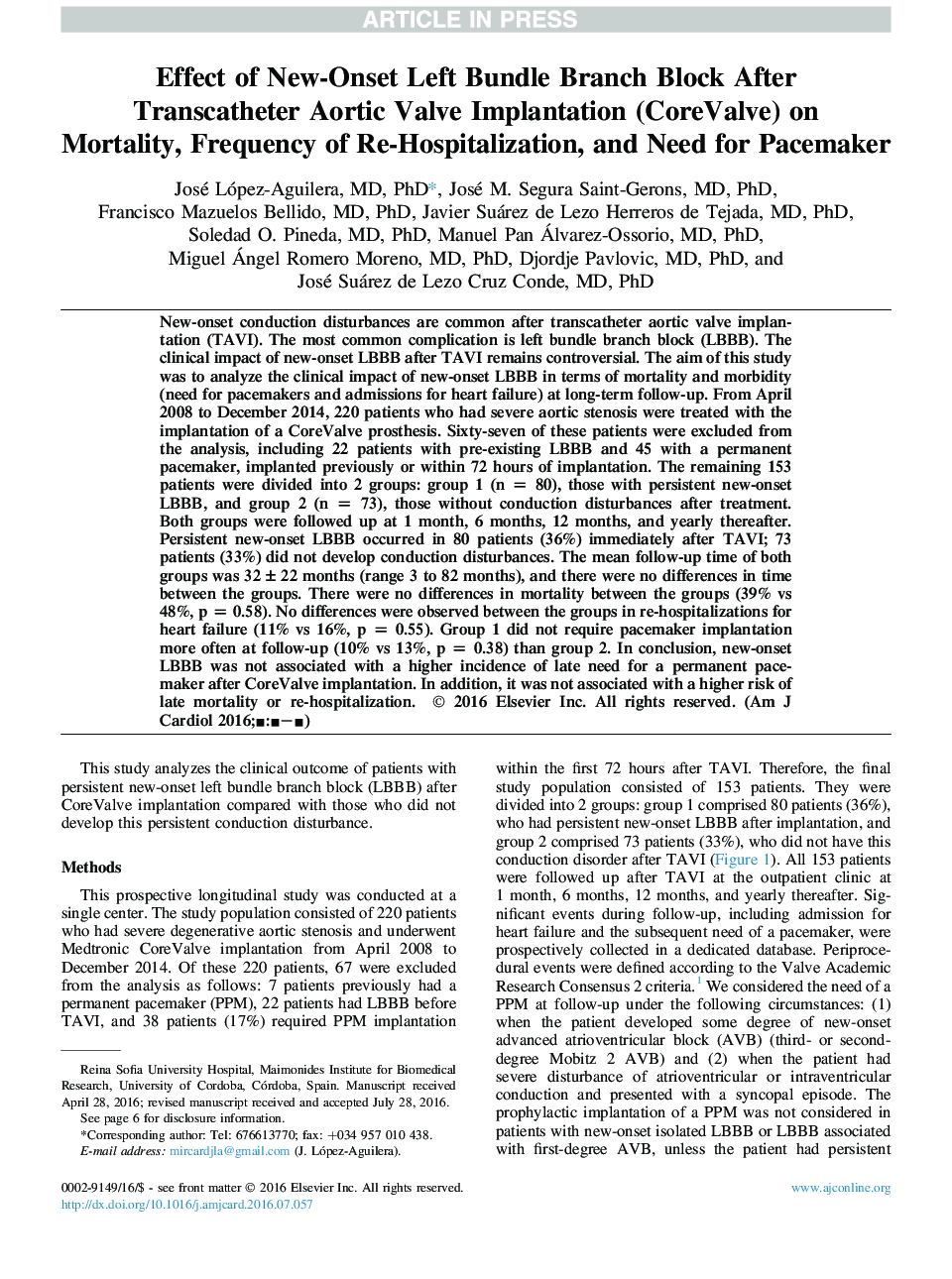| کد مقاله | کد نشریه | سال انتشار | مقاله انگلیسی | نسخه تمام متن |
|---|---|---|---|---|
| 5595342 | 1572101 | 2016 | 6 صفحه PDF | دانلود رایگان |
عنوان انگلیسی مقاله ISI
Effect of New-Onset Left Bundle Branch Block After Transcatheter Aortic Valve Implantation (CoreValve) on Mortality, Frequency of Re-Hospitalization, and Need for Pacemaker
دانلود مقاله + سفارش ترجمه
دانلود مقاله ISI انگلیسی
رایگان برای ایرانیان
موضوعات مرتبط
علوم پزشکی و سلامت
پزشکی و دندانپزشکی
کاردیولوژی و پزشکی قلب و عروق
پیش نمایش صفحه اول مقاله

چکیده انگلیسی
New-onset conduction disturbances are common after transcatheter aortic valve implantation (TAVI). The most common complication is left bundle branch block (LBBB). The clinical impact of new-onset LBBB after TAVI remains controversial. The aim of this study was to analyze the clinical impact of new-onset LBBB in terms of mortality and morbidity (need for pacemakers and admissions for heart failure) at long-term follow-up. From April 2008 to December 2014, 220 patients who had severe aortic stenosis were treated with the implantation of a CoreValve prosthesis. Sixty-seven of these patients were excluded from the analysis, including 22 patients with pre-existing LBBB and 45 with a permanent pacemaker, implanted previously or within 72 hours of implantation. The remaining 153 patients were divided into 2 groups: group 1 (n = 80), those with persistent new-onset LBBB, and group 2 (n = 73), those without conduction disturbances after treatment. Both groups were followed up at 1 month, 6 months, 12 months, and yearly thereafter. Persistent new-onset LBBB occurred in 80 patients (36%) immediately after TAVI; 73 patients (33%) did not develop conduction disturbances. The mean follow-up time of both groups was 32 ± 22 months (range 3 to 82 months), and there were no differences in time between the groups. There were no differences in mortality between the groups (39% vs 48%, p = 0.58). No differences were observed between the groups in re-hospitalizations for heart failure (11% vs 16%, p = 0.55). Group 1 did not require pacemaker implantation more often at follow-up (10% vs 13%, p = 0.38) than group 2. In conclusion, new-onset LBBB was not associated with a higher incidence of late need for a permanent pacemaker after CoreValve implantation. In addition, it was not associated with a higher risk of late mortality or re-hospitalization.
ناشر
Database: Elsevier - ScienceDirect (ساینس دایرکت)
Journal: The American Journal of Cardiology - Volume 118, Issue 9, 1 November 2016, Pages 1380-1385
Journal: The American Journal of Cardiology - Volume 118, Issue 9, 1 November 2016, Pages 1380-1385
نویسندگان
José MD, PhD, José M. MD, PhD, Francisco MD, PhD, Javier MD, PhD, Soledad O. MD, PhD, Manuel MD, PhD, Miguel Ángel MD, PhD, Djordje MD, PhD, José MD, PhD,